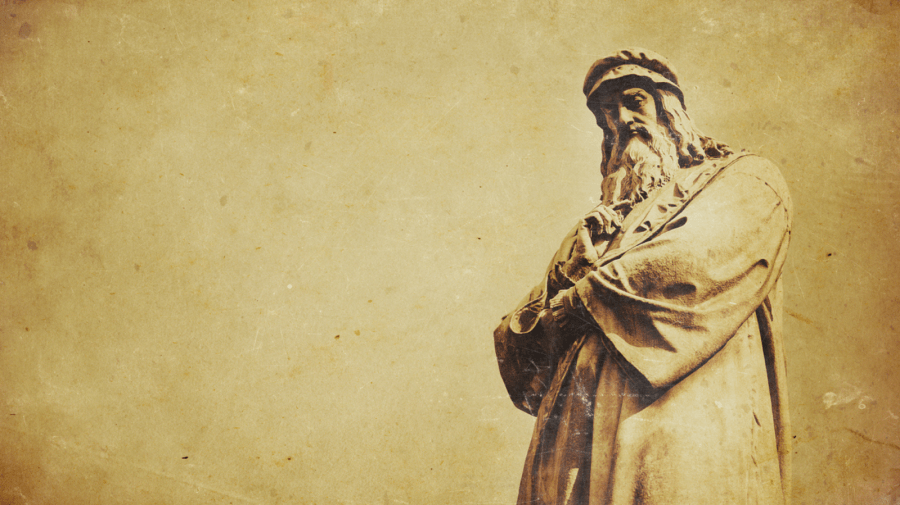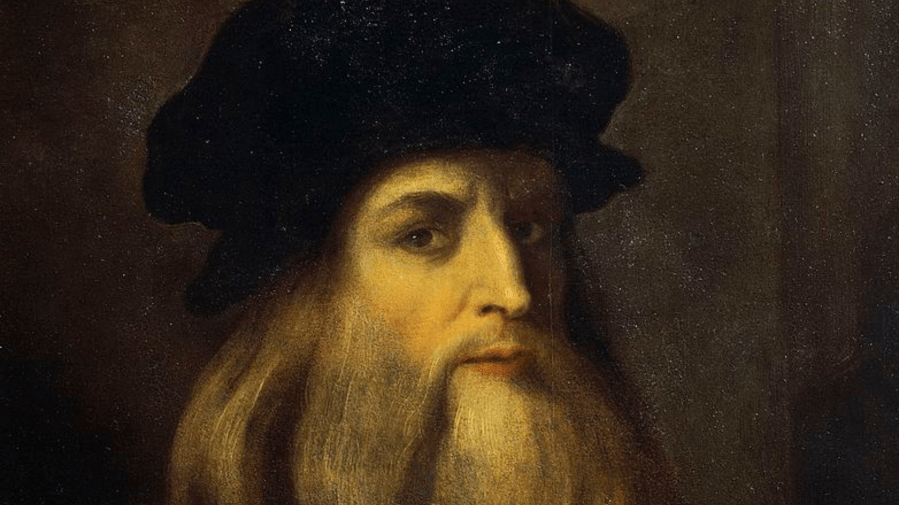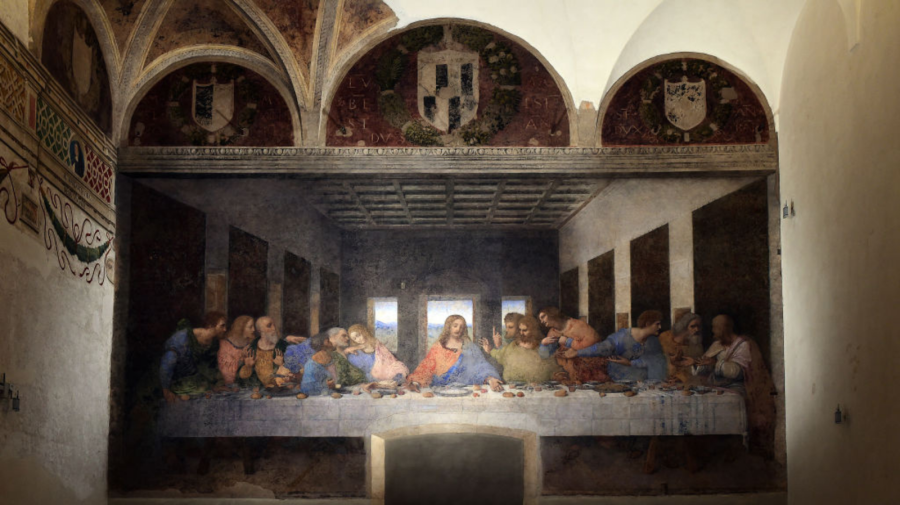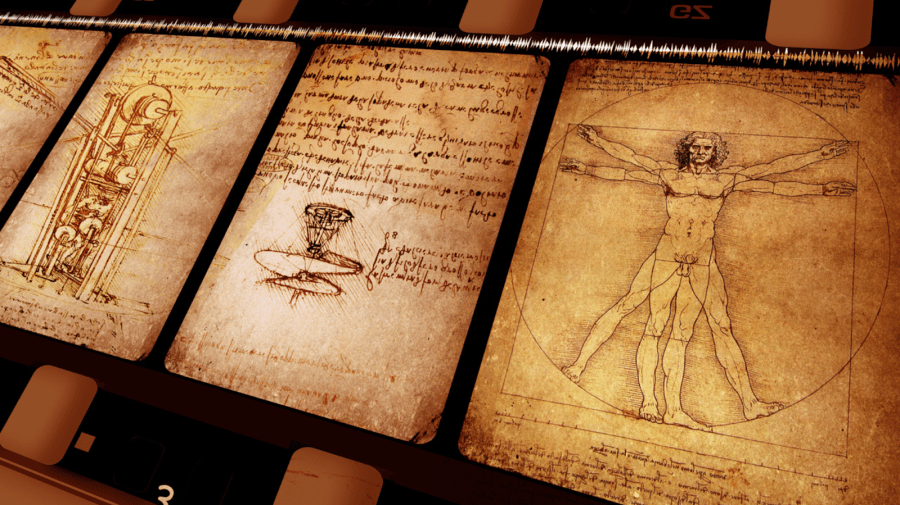Leonardo da Vinci: The History and Legacy of the Renaissance Man

As one of the most celebrated figures in history, Leonardo da Vinci epitomized the ideals of the Italian Renaissance. Not only was he one of the most influential artists in history, but his scientific studies and ideas were centuries ahead of his time. Join us for an overview of the life of Leonardo da Vinci and find out why he was one of the most fascinating figures in the history of mankind.
A Brief Biography of Leonardo da Vinci

Leonardo da Vinci was born on April 15, 1452, in a village near what’s now Tuscany. He was the illegitimate son of a Florentine notary named Ser Piero and a young peasant woman named Caterina, who raised him until he was around five years old. From that point on, he was raised on his father’s estate in the town of Vinci, hence his name, which literally means “Leonardo of Vinci.”
Growing up, he received a pretty bare-bones education that covered things like reading, writing, and arithmetic. Nonetheless, his intense curiosity and artistic talent began to manifest at an early age. Around the age of 14, he was apprenticed to Florentine artist Andrea del Verrocchio and qualified as a master artist in the Guild of St. Luke by the time he reached 20.
Leonardo never married and is believed by some scholars to have been a homosexual. In 1476, he and three other young men were charged with sodomy, which was considered a major crime at the time. However, the charges were dropped after no witnesses showed up to testify.
Some of his first commissions were never finished, as he relocated to work for the Duke of Milan in 1482, where he spent 17 years until the Duke’s fall from power in 1499. He then spent the next 16 years traveling throughout Italy, taking on a number of notable patrons. In 1516, he was appointed as the Premier Painter and Engineer and Architect of King Francis I of France, who legend claims was by his side when he passed away on May 2, 1519, in Cloux, France.
Leonardo da Vinci’s Paintings and Sculpture

While da Vinci is recorded as having been a sculptor throughout his life, for centuries it was believed that none of his three-dimensional work survived. But in 2019, a piece called Virgin with the Laughing Child was unveiled and presented as a possible candidate for da Vinci’s only surviving piece of sculpture. Today, many people are far more familiar with the artist’s paintings, such as the Last Supper and the Mona Lisa, which are arguably among the most famous paintings in the world.
Leonardo painted the Last Supper from 1495 to 98 under the patronage of Ludovico Sforza, the Duke of Milan. The detailed reactions of each of Jesus’ disciples are one of the most fascinating parts of the painting, and their complexity was likely no accident. While fictional works like The da Vinci Code suggest that the painting is infused with Illuminati-style secrets, it’s more likely that its hidden messages have more to do with the unique features assigned to each character.
Then there’s the Mona Lisa, which is considered one of the masterpieces of the art world. Though no one is quite certain, the mysterious woman in the portrait is widely believed to be the wife of a Florentine merchant named Francesco del Giocondo. Leonardo began the work in 1503 and spent so long on it that he never actually gave it to its commissioner. Instead, he kept working on it until near his death, completing it sometime between 1517 and 1519.
The Mona Lisa now has its own room in the Louvre museum in Paris and attracts visitors from all over the world. While the painting has always been appreciated for its mastery, it wasn’t until it was stolen in 1911 and recovered in 1913 that it became as internationally renowned as it is today. A nude version of the Mona Lisa, which has been dubbed the Monna Vanna, also exists though Scientists are unsure whether the charcoal drawing was done by da Vinci or one of his students.
Inside da Vinci’s Notebooks

One reason why scholars know so much about the Renaissance master is that Leonardo da Vinci was nothing if not an avid fan of journaling. During his lifetime, he filled thousands of pages with his musings, drawings, and inventions. Many of his journals have survived until today, and you can even check out digital copies of da Vinci’s journals online.
While the journals are difficult to read, as the left-handed da Vinci wrote from right to left, they’re a true testament to the artist’s brilliance. His detailed study of anatomy even included notes on the circulatory system, centuries before it became common medical knowledge.
In addition to being a master artist, da Vinci’s drawings and notes reveal that he was also one of the most revolutionary scientists and inventors in history. While many of his ideas were ahead of his time, he came up with the precursors for innovations such as the helicopter, “flying machine,” and scuba gear.
He was also a noted engineer and developed a series of war machines, such as a triple barrel cannon and “armored car,” the precursor of the modern tank. Check out da Vinci Inventions for more info on the artist’s many innovative ideas.
As an artist and architect, da Vinci was also obsessed with proportion and form. His Vitruvian Man drawing, which features a naked man inside a perfect circle, was both a study in proportion and mankind’s link to the divine. Such concepts, which had links to ancient beliefs, suggested that the human body was a sort of metaphor for the design of the universe. In one of his notebooks, as quoted in Da Vinci’s Ghost by Toby Lester, Vinci wrote, “By the ancients man was termed a lesser world, and certainly the use of this name is well bestowed, because…his body is an analogue for the world.”
His fascination with human form and symmetry carried over into his study of human faces. Though largely considered junk science today, from ancient times an art called physiognomy was believed to reveal a person’s character based on the shape and features of their face.
Today, da Vinci’s work still serves as a model of what humans are capable of at their full potential. Leonardo da Vinci’s insatiable curiosity and devoted studies go to show just how much can be learned from the simple art of paying attention to the world around us.





